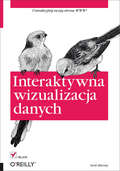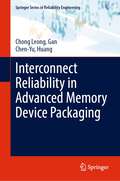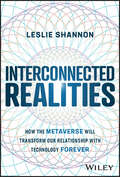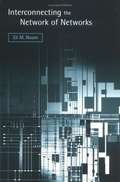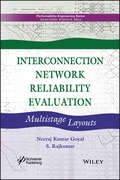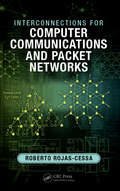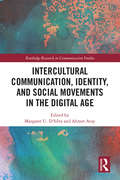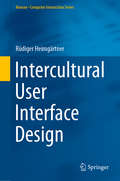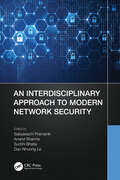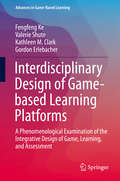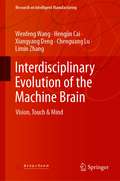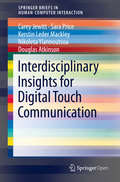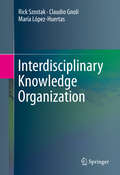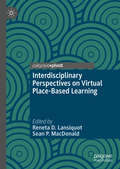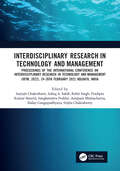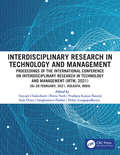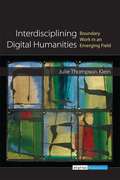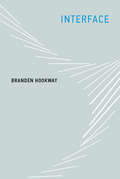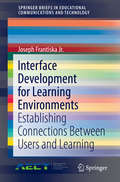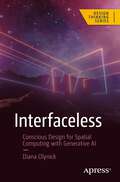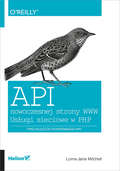- Table View
- List View
Interaktywna wizualizacja danych
by Scott MurrayUatrakcyjnij swoj? WWW!Skoro mawia si?, ?e obraz jest wart wi?cej ni? tysi?c s?ów, mo?na te? powiedzie?, ?e jeden wykres jest wart wi?cej ni? tysi?c tabel z danymi. Dlatego w?a?nie u?ytkownicy uwielbiaj? wykresy! Ju? jeden rzut oka pozwala wyrobi? sobie zdanie na temat ka?dego problemu. Je?eli do tego doda? interaktywne rozwi?zania, efekt mo?e by? tylko jeden — zachwyt Twoich klientów! Biblioteka D3 pozwala na budowanie interaktywnych wykresów, które pozwol? Ci na efektown? prezentacj? posiadanych informacji.W trakcie lektury tej ksi??ki przekonasz si?, jak szybko mo?na przygotowa? atrakcyjny wykres, prezentuj?cy nawet najbardziej skomplikowane dane. Najpierw gruntownie poznasz podstawy HTML-a, JavaScriptu oraz formatu SVG. Po tym wst?pie b?dziesz gotowy, by rozpocz?? przygod? z bibliotek? D3! Okre?lanie osi, skalowanie, efekty specjalne to tylko niektóre z poruszanych tematów. Gdy ju? opanujesz tworzenie wykresów, pora przej?? do kolejnego rozdzia?u. Dowiesz si? z niego, jak na posiadany wykres nanie?? interaktywne dodatki. Na sam koniec zobaczysz, jak nak?ada? dane na mapy geograficzne oraz eksportowa? stworzone wykresy. Ksi??k? t? doceni ka?dy programista, który kiedykolwiek stan?? przed problemem wizualizacji danych. Przekonaj si?, jak ?atwo mo?na: tworzy? wykresy korzysta? z danych w formacie CSV skalowa? wykresy dodawa? do wykresów interaktywne informacje Zachwy? u?ytkowników przydatnymi wykresami!
Interconnect Reliability in Advanced Memory Device Packaging (Springer Series in Reliability Engineering)
by Chong Leong, Gan Chen-Yu, HuangThis book explains mechanical and thermal reliability for modern memory packaging, considering materials, processes, and manufacturing.In the past 40 years, memory packaging processes have evolved enormously. This book discusses the reliability and technical challenges of first-level interconnect materials, packaging processes, advanced specialty reliability testing, and characterization of interconnects. It also examines the reliability of wire bonding, lead-free solder joints such as reliability testing and data analyses, design for reliability in hybrid packaging and HBM packaging, and failure analyses. The specialty of this book is that the materials covered are not only for second-level interconnects, but also for packaging assembly on first-level interconnects and for the semiconductor back-end on 2.5D and 3D memory interconnects. This book can be used as a text for college and graduate students who have the potential to become our future leaders, scientists, and engineers in the electronics and semiconductor industry.
Interconnected Realities: How the Metaverse Will Transform Our Relationship to Technology Forever
by Leslie ShannonExplore how the metaverse is changing our livesIn Interconnected Realities, Leslie Shannon, Head of Trend and Innovation Scouting at Nokia, delivers an energizing and optimistic new take on the Metaverse. Starting with metaverse realms already in existence today, the book explores the purpose that each independent platform serves, as well as how all these disparate realms will ultimately be stitched together to permanently transform our personal and business lives. A singularly insightful and informed exploration of a fascinating subject at the intersection of technology, business, and society, Interconnected Realities is an essential resource for executives, managers, board members, and other business leaders at companies in a wide range of industries, as well as tech enthusiasts, futurists, and anyone with an interest in the future of social interaction, business, or technology.
Interconnecting the Network of Networks
by Eli M. NoamThis book describes the transformation of telecommunications from national network monopolies to a new system, the network of networks, and the glue that holds it together, interconnection.
Interconnection Network Reliability Evaluation: Multistage Layouts (Performability Engineering Series)
by Neeraj Kumar Goyal S. RajkumarKeeping in view the growth of the technological frontiers, there is always a need for the development of reliable, fault tolerant and cost- effective interconnection networks (INs) which are the critical metrics to achieve the goal of parallelism. The main objective of this book is to design new fault tolerant interconnection network layouts capable of path redundancy among dynamic failures. New INs designs are proposed and their observed results are found promising when compared with some of the earlier networks. The book also covers the reliability evaluation of various industrial network topologies considering multiple reliability performance parameters (2-TR, broadcast and ATR). Finally, the book also focuses on reliability evaluation and comparison of various topologies considering connectivity among multiple sources and multiple destinations (MSMT) nodes.
Interconnections for Computer Communications and Packet Networks
by Roberto Rojas-CessaThis book introduces different interconnection networks applied to different systems. Interconnection networks are used to communicate processing units in a multi-processor system, routers in communication networks, and servers in data centers. Queuing techniques are applied to interconnection networks to support a higher utilization of resources. There are different queuing strategies, and these determine not only the performance of the interconnection network, but also the set of requirements to make them work effectively and their cost. Routing algorithms are used to find routes to destinations and directions in what information travels. Additional properties, such as avoiding deadlocks and congestion, are sought. Effective routing algorithms need to be paired up with these networks. The book will introduce the most relevant interconnection networks, queuing strategies, and routing algorithm. It discusses their properties and how these leverage the performance of the whole interconnection system. In addition, the book covers additional topics for memory management and congestion avoidance, used to extract higher performance from the interconnection network.
Intercultural Communication, Identity, and Social Movements in the Digital Age (Routledge Research in Communication Studies)
by Margaret U. D’Silva Ahmet AtayThis book examines the complex and multidimensional relationship between culture and social media, and its specific impact on issues of identity and social movements, in a globalized world. Contemporary cyber culture involves communication among people who are culturally, nationally, and linguistically similar or radically different. Social media becomes a space for mediated cultural information transfer which can either facilitate a vibrant public sphere or create cultural and social cleavages. Contributors of the book come from diverse cultural backgrounds to provide a comprehensive analysis of how these social media exchanges allow members of traditionally oppressed groups find their voices, cultivate communities, and construct their cultural identities in multiple ways. This book will be of great relevance to scholars and students working in the field of media and new media studies, intercultural communication, especially critical intercultural communication, and academics studying social identity and social movements.
Intercultural Communication, Identity, and Social Movements in the Digital Age (Routledge Research in Communication Studies)
by Margaret U. D’Silva; Ahmet AtayThis book examines the complex and multidimensional relationship between culture and social media, and its specific impact on issues of identity and social movements, in a globalized world. Contemporary cyber culture involves communication among people who are culturally, nationally, and linguistically similar or radically different. Social media becomes a space for mediated cultural information transfer which can either facilitate a vibrant public sphere or create cultural and social cleavages. Contributors of the book come from diverse cultural backgrounds to provide a comprehensive analysis of how these social media exchanges allow members of traditionally oppressed groups find their voices, cultivate communities, and construct their cultural identities in multiple ways.This book will be of great relevance to scholars and students working in the field of media and new media studies, intercultural communication, especially critical intercultural communication, and academics studying social identity and social movements.
Intercultural User Interface Design (Human–Computer Interaction Series)
by Rüdiger HeimgärtnerThe path for developing an internationally usable product with a human-machine interface is described in this textbook, from theory to conception and from design to practical implementation. The most important concepts in the fields of philosophy, communication, culture and Ethnocomputing as the basis of intercultural user interface design are explained. The book presents directly usable and implementable knowledge that is relevant for the processes of internationalization and localization of software. Aspects of software ergonomics, software engineering and human-centered design are presented in an intercultural context; general and concrete recommendations and checklists for immediate use in product design are also provided. Each chapter includes the target message, its motivation and theoretical justification as well as the practical methods to achieve the intended benefit from the respective topic. The book opens with an introduction illuminating the background necessary for taking culture into account in Human Computer Interaction (HCI) design. Definitions of concepts are followed by a historical overview of the importance of taking culture into account in HCI design. Subsequently, the structures, processes, methods, models, and approaches concerning the relationship between culture and HCI design are illustrated to cover the most important questions in practice.
An Interdisciplinary Approach to Modern Network Security
by Sabyasachi Pramanik Anand Sharma Surbhi Bhatia Dac-Nhuong LeAn Interdisciplinary Approach to Modern Network Security presents the latest methodologies and trends in detecting and preventing network threats. Investigating the potential of current and emerging security technologies, this publication is an all-inclusive reference source for academicians, researchers, students, professionals, practitioners, network analysts and technology specialists interested in the simulation and application of computer network protection. It presents theoretical frameworks and the latest research findings in network security technologies, while analyzing malicious threats which can compromise network integrity. It discusses the security and optimization of computer networks for use in a variety of disciplines and fields. Touching on such matters as mobile and VPN security, IP spoofing and intrusion detection, this edited collection emboldens the efforts of researchers, academics and network administrators working in both the public and private sectors. This edited compilation includes chapters covering topics such as attacks and countermeasures, mobile wireless networking, intrusion detection systems, next-generation firewalls, web security and much more. Information and communication systems are an essential component of our society, forcing us to become dependent on these infrastructures. At the same time, these systems are undergoing a convergence and interconnection process that has its benefits, but also raises specific threats to user interests. Citizens and organizations must feel safe when using cyberspace facilities in order to benefit from its advantages. This book is interdisciplinary in the sense that it covers a wide range of topics like network security threats, attacks, tools and procedures to mitigate the effects of malware and common network attacks, network security architecture and deep learning methods of intrusion detection.
Interdisciplinary Approaches to Distance Teaching: Connecting Classrooms in Theory and Practice (Routledge Research in Education)
by Nathan Straight Alan BlackstockSynchronous technologies, particularly interactive video conferencing (IVC), are becoming common modes of teaching and delivering college courses. The increasing popularity of IVC in the U.S. and abroad calls for more pedagogically effective practices for instructors using this technology. This volume focuses on innovative and proven approaches to IVC teaching in a variety of disciplines: English, history, biology, chemistry, geology, engineering, social work, and elementary and special education. Contributors hail from a pioneering university at the forefront of distance education and understand the practice and potential of IVC teaching at the highest levels. Chapters outline the challenges and benefits of IVC teaching from pedagogical, technical, and administrative perspectives.
Interdisciplinary Design of Game-based Learning Platforms: A Phenomenological Examination of the Integrative Design of Game, Learning, and Assessment (Advances in Game-Based Learning)
by Fengfeng Ke Valerie Shute Kathleen M. Clark Gordon ErlebacherThis book represents a four-year research and development project. It presents a phenomenological examination and explanation of a functional design framework for games in education. It furnishes a rich description of the experiences and perceptions of performing interdisciplinary collaborative design among experts of very diverse fields, such as learning systems design, architectural design, assessment design, mathematics education, and scientific computing.
Interdisciplinary Evolution of the Machine Brain: Vision, Touch & Mind (Research on Intelligent Manufacturing)
by Wenfeng Wang Xiangyang Deng Limin Zhang Hengjin Cai Chenguang LuThis book seeks to interpret connections between the machine brain, mind and vision in an alternative way and promote future research into the Interdisciplinary Evolution of Machine Brain (IEMB). It gathers novel research on IEMB, and offers readers a step-by-step introduction to the theory and algorithms involved, including data-driven approaches in machine learning, monitoring and understanding visual environments, using process-based perception to expand insights, mechanical manufacturing for remote sensing, reconciled connections between the machine brain, mind and vision, and the interdisciplinary evolution of machine intelligence. This book is intended for researchers, graduate students and engineers in the fields of robotics, Artificial Intelligence and brain science, as well as anyone who wishes to learn the core theory, principles, methods, algorithms, and applications of IEMB.
Interdisciplinary Insights for Digital Touch Communication (Human–Computer Interaction Series)
by Kerstin Leder Mackley Carey Jewitt Sara Price Nikoleta Yiannoutsou Douglas AtkinsonCommunication is increasingly moving beyond ‘ways of seeing’ to ‘ways of feeling’. This Open Access book provides social design insights and implications for HCI research and design exploring digitally mediated touch communication. It offers a socially orientated map to help navigate the complex social landscape of digitally mediated touch for communication: from everyday touch-screens, tangibles, wearables, haptics for virtual reality, to the tactile internet of skin. Drawing on literature reviews, new case-study vignettes, and exemplars of digital touch, the book examines the major social debates provoked by digital touch, and investigates social themes central to the communicative potential and societal consequences of digital touch: · Communication environments, capacities and practices · Norms associations and expectations · Presence, absence and connection · Social imaginaries of digital touch · Digital touch ethics and values The book concludes with a discussion of the significance of social understanding and methods in the context of Interdisciplinary collaborations to explore touch, towards the design of digital touch communication, ‘ways of feeling’, that are useable, appropriate, ethical and socially aware.
Interdisciplinary Knowledge Organization
by Rick Szostak Claudio Gnoli María López-HuertasThis book proposes a novel approach to classification, discusses its myriad advantages, and outlines how such an approach to classification can best be pursued. It encourages a collaborative effort toward the detailed development of such a classification. This book is motivated by the increased importance of interdisciplinary scholarship in the academy, and the widely perceived shortcomings of existing knowledge organization schemes in serving interdisciplinary scholarship. It is designed for scholars of classification research, knowledge organization, the digital environment, and interdisciplinarity itself. The approach recommended blends a general classification with domain-specific classification practices. The book reaches a set of very strong conclusions: -Existing classification systems serve interdisciplinary research and teaching poorly. -A novel approach to classification, grounded in the phenomena studied rather than disciplines, would serve interdisciplinary scholarship much better. It would also have advantages for disciplinary scholarship. The productivity of scholarship would thus be increased. -This novel approach is entirely feasible. Various concerns that might be raised can each be addressed. The broad outlines of what a new classification would look like are developed. -This new approach might serve as a complement to or a substitute for existing classification systems. -Domain analysis can and should be employed in the pursuit of a general classification. This will be particularly important with respect to interdisciplinary domains. -Though the impetus for this novel approach comes from interdisciplinarity, it is also better suited to the needs of the Semantic Web, and a digital environment more generally. Though the primary focus of the book is on classification systems, most chapters also address how the analysis could be extended to thesauri and ontologies. The possibility of a universal thesaurus is explored. The classification proposed has many of the advantages sought in ontologies for the Semantic Web. The book is therefore of interest to scholars working in these areas as well.
Interdisciplinary Perspectives on Virtual Place-Based Learning
by Reneta D. Lansiquot Sean P. MacDonaldThis book explores how virtual place-based learning and research has been interpreted and incorporated into learning environments both within and across disciplinary perspectives. Contributing authors highlight the ways in which they have employed a variety of methodologies to engage students in the virtual exploration of place. In the process, they focus on the approaches they have used to bring the real world closer through virtual exploration. Chapters examine how the resources of the urban environment have been tapped to design student research projects within the context of an interdisciplinary course. In this way, authors highlight how virtual place-based learning has employed the tools of mapping and data visualization, information literacy, game design, digital storytelling, and the creation of non-fiction VR documentaries. This book makes a valuable contribution to the literature, offering a model of how the study of place can be employed in creative ways to enhance interdisciplinary learning.
Interdisciplinary Research for Printing and Packaging (Lecture Notes in Electrical Engineering #896)
by Pengfei Zhao Zhuangzhi Ye Min Xu Li Yang Linghao Zhang Shu YanThis book includes original, peer-reviewed research papers from the 12th China Academic Conference on Printing and Packaging (CACPP 2021), held in Beijing, China on November 12-14, 2021. The proceedings cover the recent findings in color science and technology, image processing technology, digital media technology, mechanical and electronic engineering and numerical control, materials and detection, digital process management technology in printing and packaging, and other technologies. As such, the book is of interest to university researchers, R&D engineers and graduate students in the field of graphic arts, packaging, color science, image science, material science, computer science, digital media, network technology, and smart manufacturing technology.
Interdisciplinary Research in Technology and Management: Proceedings of the International Conference on Interdisciplinary Research in Technology and Management (IRTM, 2022), 24-26th February 2022, Kolkata, India
by Satyajit Chakrabarti Ashiq A. Sakib Rohit Singh Pradipta Kumar Banerji Sanghamitra Poddar Anupam Bhattacharya Malay Gangopadhyaya Srijita ChakrabortyWe live in an inter-connected world. In the era of Industry 4.0, technology is getting embedded more and more in the way ‘we learn, live, work, and play’. This progression is accelerating at a pace never seen before. Interdisciplinary and collaborative research across disciplines within the Technology domain and Management domain, and across the Technology-Management interface is opening up exciting new possibilities for solving problems whose solutions are beyond the scope of a single discipline, domain or practice, and helping to create a brave new world. The goal of this conference was to bring together scholars, researchers, consultants, and practitioners to share their interdisciplinary research and consultative work in Technology and Management. Selected papers were then peer-reviewed and authors were invited to present their work in the conference.
Interdisciplinary Research in Technology and Management: Proceedings of the International Conference on Interdisciplinary Research in Technology and Management (IRTM, 2021), 26-28 February,2021, Kolkata, India
by Satyajit Chakrabarti; Rintu Nath; Pradipta Kumar Banerji; Sujit Datta; Sanghamitra Poddar; Malay GangopadhyayaThe conference on ‘Interdisciplinary Research in Technology and Management” was a bold experiment in deviating from thetraditional approach of conferences which focus on a specific topic or theme. By attempting to bring diverse inter-relatedtopics on a common platform, the conference has sought to answer a long felt need and give a fillip to interdisciplinaryresearch not only within the technology domain but across domains in the management field as well.The spectrum of topics covered in the research papers is too wide to be singled out for specific mention but it isnoteworthy that these papers addressed many important and relevant concerns of the day.
Interdisciplining Digital Humanities: Boundary Work In An Emerging Field
by Julie Thompson KleinInterdisciplining Digital Humanities sorts through definitions and patterns of practice over roughly sixty-five years of work, providing an overview for specialists and a general audience alike. It is the only book that tests the widespread claim that Digital Humanities is interdisciplinary. By examining the boundary work of constructing, expanding, and sustaining a new field, it depicts both the ways this new field is being situated within individual domains and dynamic cross-fertilizations that are fostering new relationships across academic boundaries. It also accounts for digital reinvigorations of "public humanities" in cultural heritage institutions of museums, archives, libraries, and community forums.
Interface (The\mit Press Ser.)
by Branden HookwayA cultural theory of the interface as a relation that is both ubiquitous and elusive, drawing on disciplines from cultural theory to architecture.In this book, Branden Hookway considers the interface not as technology but as a form of relationship with technology. The interface, Hookway proposes, is at once ubiquitous and hidden from view. It is both the bottleneck through which our relationship to technology must pass and a productive encounter embedded within the use of technology. It is a site of contestation—between human and machine, between the material and the social, between the political and the technological—that both defines and elides differences.A virtuoso in multiple disciplines, Hookway offers a theory of the interface that draws on cultural theory, political theory, philosophy, art, architecture, new media, and the history of science and technology. He argues that the theoretical mechanism of the interface offers a powerful approach to questions of the human relationship to technology. Hookway finds the origin of the term interface in nineteenth-century fluid dynamics and traces its migration to thermodynamics, information theory, and cybernetics. He discusses issues of subject formation, agency, power, and control, within contexts that include technology, politics, and the social role of games. He considers the technological augmentation of humans and the human-machine system, discussing notions of embodied intelligence.Hookway views the figure of the subject as both receiver and active producer in processes of subjectification. The interface, he argues, stands in a relation both alien and intimate, vertiginous and orienting to those who cross its threshold.
Interface
by Branden HookwayIn this book, Branden Hookway considers the interface not as technology but as a form of relationship with technology. The interface, Hookway proposes, is at once ubiquitous and hidden from view. It is both the bottleneck through which our relationship to technology must pass and a productive encounter embedded within the use of technology. It is a site of contestation -- between human and machine, between the material and the social, between the political and the technological -- that both defines and elides differences. A virtuoso in multiple disciplines, Hookway offers a theory of the interface that draws on cultural theory, political theory, philosophy, art, architecture, new media, and the history of science and technology. He argues that the theoretical mechanism of the interface offers a powerful approach to questions of the human relationship to technology. Hookway finds the origin of the term interface in nineteenth-century fluid dynamics and traces its migration to thermodynamics, information theory, and cybernetics. He discusses issues of subject formation, agency, power, and control, within contexts that include technology, politics, and the social role of games. He considers the technological augmentation of humans and the human-machine system, discussing notions of embodied intelligence. Hookway views the figure of the subject as both receiver and active producer in processes of subjectification. The interface, he argues, stands in a relation both alien and intimate, vertiginous and orienting to those who cross its threshold.
Interface Development for Learning Environments: Establishing Connections Between Users and Learning (SpringerBriefs in Educational Communications and Technology)
by Joseph Frantiska Jr.This brief will examine and explore some tools and techniques that can be used to develop interfaces for learning environments. Interface design has been a topic in software engineering for many years. The advent of graphical user interfaces has created many remedies and challenges for the software engineer. In recent years with an increased emphasis in educational technology, instructional designers are also included in this arena. The interface can be a driver in terms of a learning environment’s ability to engage a student. It can also provide a point of information exchange and therefore learning between the student and the environment’s software. Thus, the issue of an interface is vital to the success of a learning environment. This brief will produce a variety of interfaces for various environments to allow the designer to contrast and compare them based upon the required purpose. The designer will have a toolkit filled with tools and techniques which will allow for interfaces that will engage the student and facilitate their learning. The primary audiences are K-12 and post-secondary educators who desire to create digital media based educational materials.
Interfaceless: Conscious Design for Spatial Computing with Generative AI (Design Thinking)
by Diana OlynickExplore the possibilities spatial computing and its integration with AI can provide beyond the confines of a traditional user interface. Spatial computing brings together physical and virtual worlds and systems. This book offers an insightful journey into harmonizing user-centered design with the vast potential of AI in spatial computing. You'll start by exploring key concepts and processes in relation to conscious design and traditional computer interfaces. You'll then be introduced to the Mindful Spatial Design Framework (MSDF) and the rapidly evolving world of generative AI and its potential to transform design processes.Once the key concepts are mastered, you'll start to put them into practice and see how to design, prototype, and test interfaceless systems and environments that are seamless and user-friendly. In doing so you'll consider topics such as functionality and aesthetics, as well as how AI can improve automation and testing. The book concludes by looking at ethical AI considerations and best practices as well as looking at next steps and future developments of spatial computing and interfaceless design. As these invisible interfaces become more prevalent, understanding the key principles of conscious design is pivotal. Interfaceless will expand your knowledge base in these areas. What You'll LearnIncorporate conscious design principles in spatial computing projects.Leverage AI to enhance UX in spatial contexts.Develop strategies to address design challenges as we move beyond physical interfaces.See how VR/XR apps, devices, and generative AI are rapidly changing how we perceive and interact with the digital realm.Who This Book Is ForUX/UI designers, developers, and tech enthusiasts eager to grasp the future of HCI.
Interfejs API. Strategia programisty
by Daniel Jacobson Greg Brail Dan WoodsPoznaj potencja? interfejsów API!Internet to gigantyczna sie? urz?dze? po??czonych ze sob?. Jego potencja? wykorzystuj? wszyscy i ka?dy jest ?wiadom tego, ?e pojedyncze urz?dzenie bez po??czenia z sieci? nic nie znaczy. Podobnie jest z systemami informatycznymi. Mo?liwo?? integracji z sieci?, tworzenia rozszerze? oraz wymiany danych pomaga twórcom aplikacji rozwin?? skrzyd?a i odnie?? sukces na szerok? skal?. Zastanawiasz si?, jak otworzy? Twój system na ?wiat? Interfejs API to jedyna droga!Si?gnij po t? ksi??k? i przekonaj si?, jak przygotowa? wygodny interfejs API, z którego programi?ci b?d? korzystali z przyjemno?ci?. Na kolejnych stronach znajdziesz kluczowe zasady projektowania interfejsów API, sposoby zabezpieczania API oraz zarz?dzania u?ytkownikami. Ponadto dowiesz si?, jak zarz?dza? ruchem sieciowym, obs?ugiwa? interfejs API oraz mierzy? sukces Twojego API. Na sam koniec zobaczysz, jak zaanga?owa? projektantów w proces adaptacji. Ta ksi??ka jest doskona?ym ?ród?em informacji dla wszystkich osób chc?cych zrozumie?, czym s? interfejsy API, jak wykorzysta? drzemi?cy w nich potencja? oraz jak unikn?? typowych zagro?e? i problemów. Twoja lektura obowi?zkowa! Dowiedz si? o rozwoju interfejsów API, a tak?e dlaczego Twoja firma mo?e ich wymaga?. Zaznajom si? z rolami w?a?cicieli zasobów, dostawców i projektantów w ?a?cuchu warto?ci interfejsu API. Opracuj strategie zwi?zane z projektowaniem, implementowaniem i wprowadzeniem produktu na rynek. Opracuj efektywny proces na potrzeby zarz?dzaniami zabezpieczeniami i u?ytkownikami. Rozwi?? problemy natury prawnej, takie jak zarz?dzanie prawami i warunki u?ytkowania. Zarz?dzaj ruchem sieciowym i komfortem pracy u?ytkowników za pomoc? pewnego modelu operacyjnego. Okre?l metryki wymagane do ustalenia skali powodzenia interfejsu API.Wszystko, co powiniene? wiedzie? o interfejsach API!
